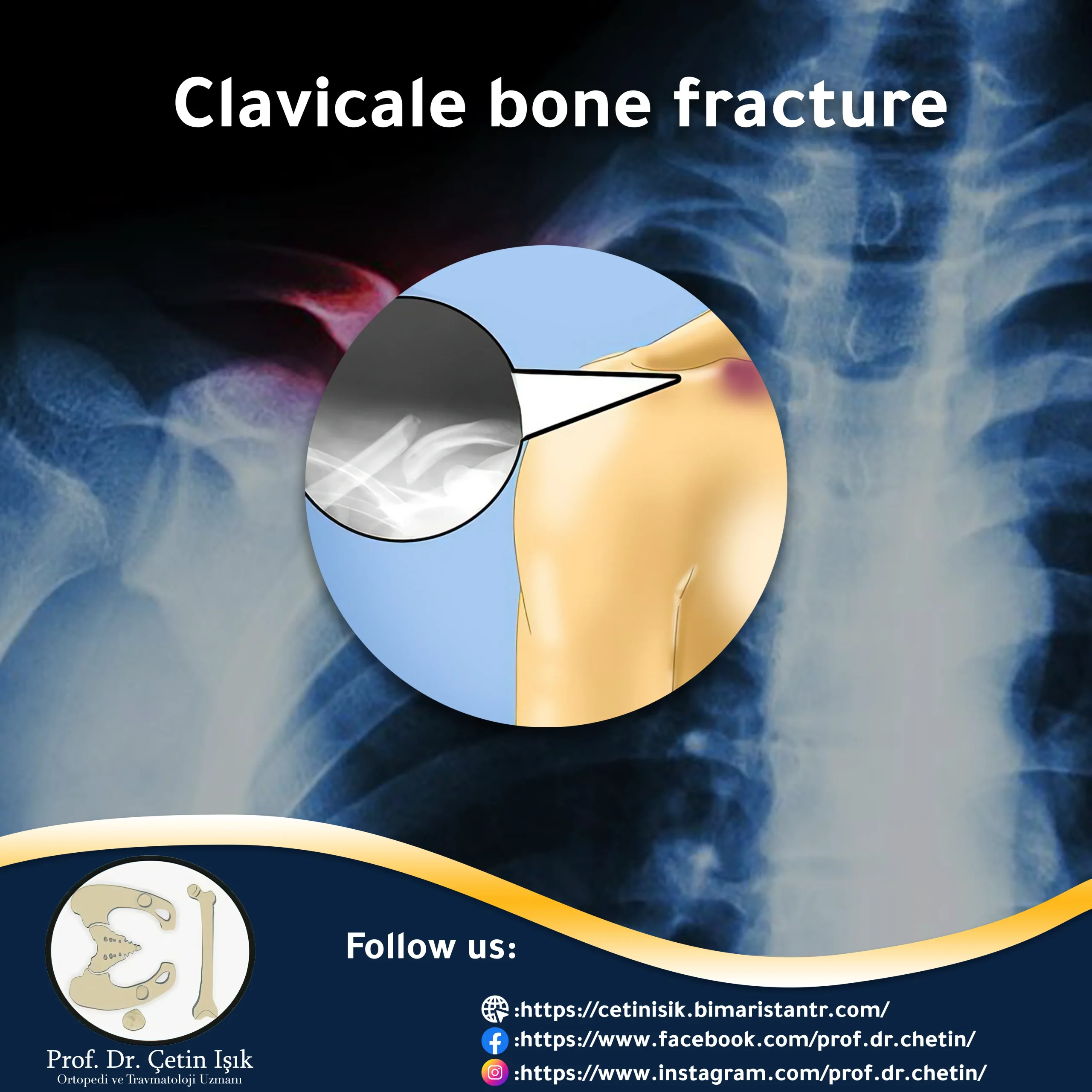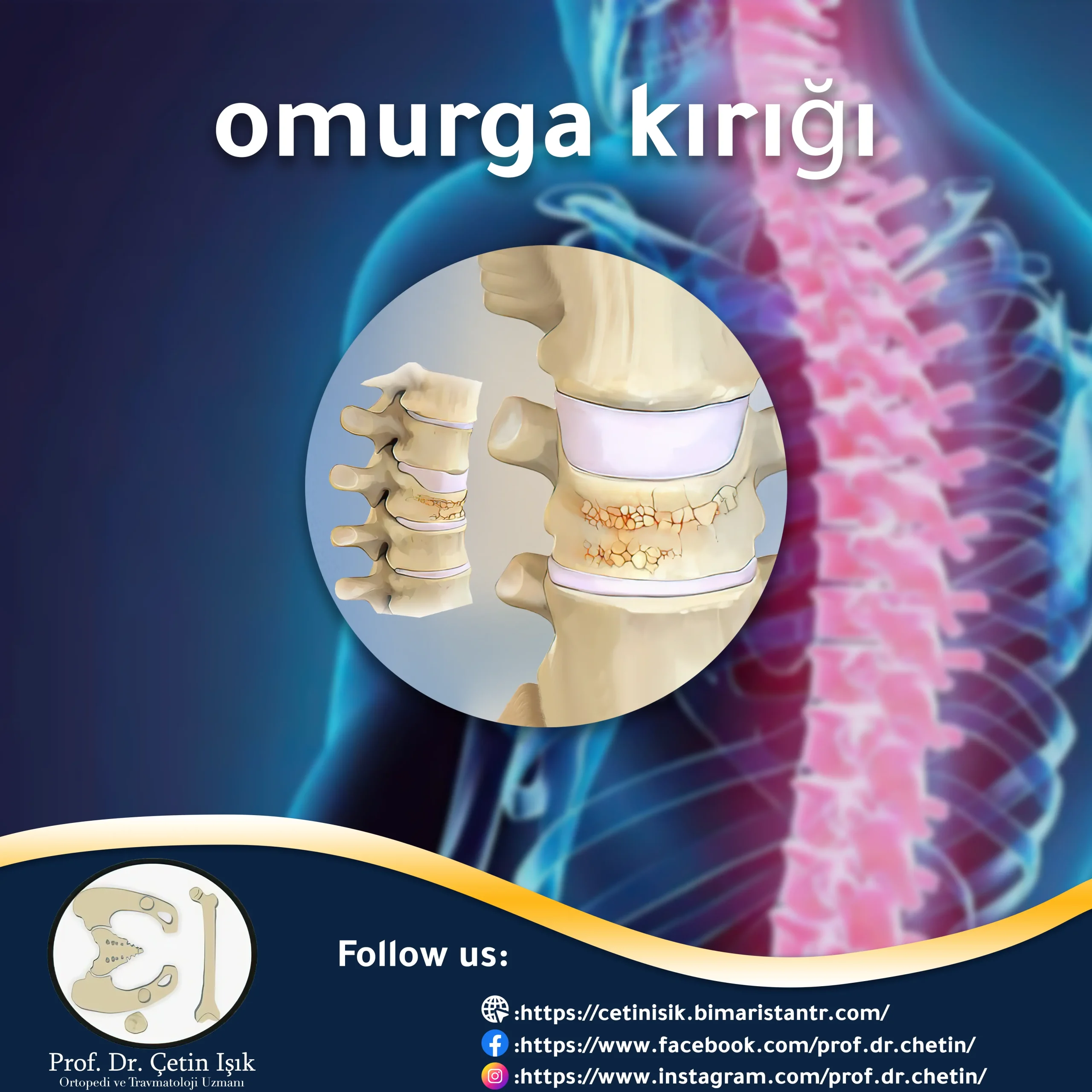A clavicle fracture is one of the common fractures that occur at all ages, especially in children. It is often treated conservatively, and a severe fracture may require surgical fixation.
A clavicle bone fracture causes pain and swelling at the site of the injury, and the affected person can often see bone deformity, especially shortly after the fracture. And from it comes the necessity of managing and taking care of the clavicle fracture if it occurs. Continue reading this article with us to learn about the clavicle fracture, its types, the most prominent causes and symptoms associated with it, and finally, its management techniques.
Profile of a clavicle fracture
, the collarbone is a long, curved bone that supports the upper limbs and extends horizontally from the top of the sternum to the scapula. It can be easily palpated superficially below the neck.
A fairly common fracture is a clavicle fracture, accounting for 10% of all adult fractures. In most cases, it occurs in the middle of the bone when a fall on the shoulder sideways or an outstretched arm is subjected to sufficient pressure to cause a fracture. A broken clavicle is extremely painful to the point of limiting the movement of the injured arm.
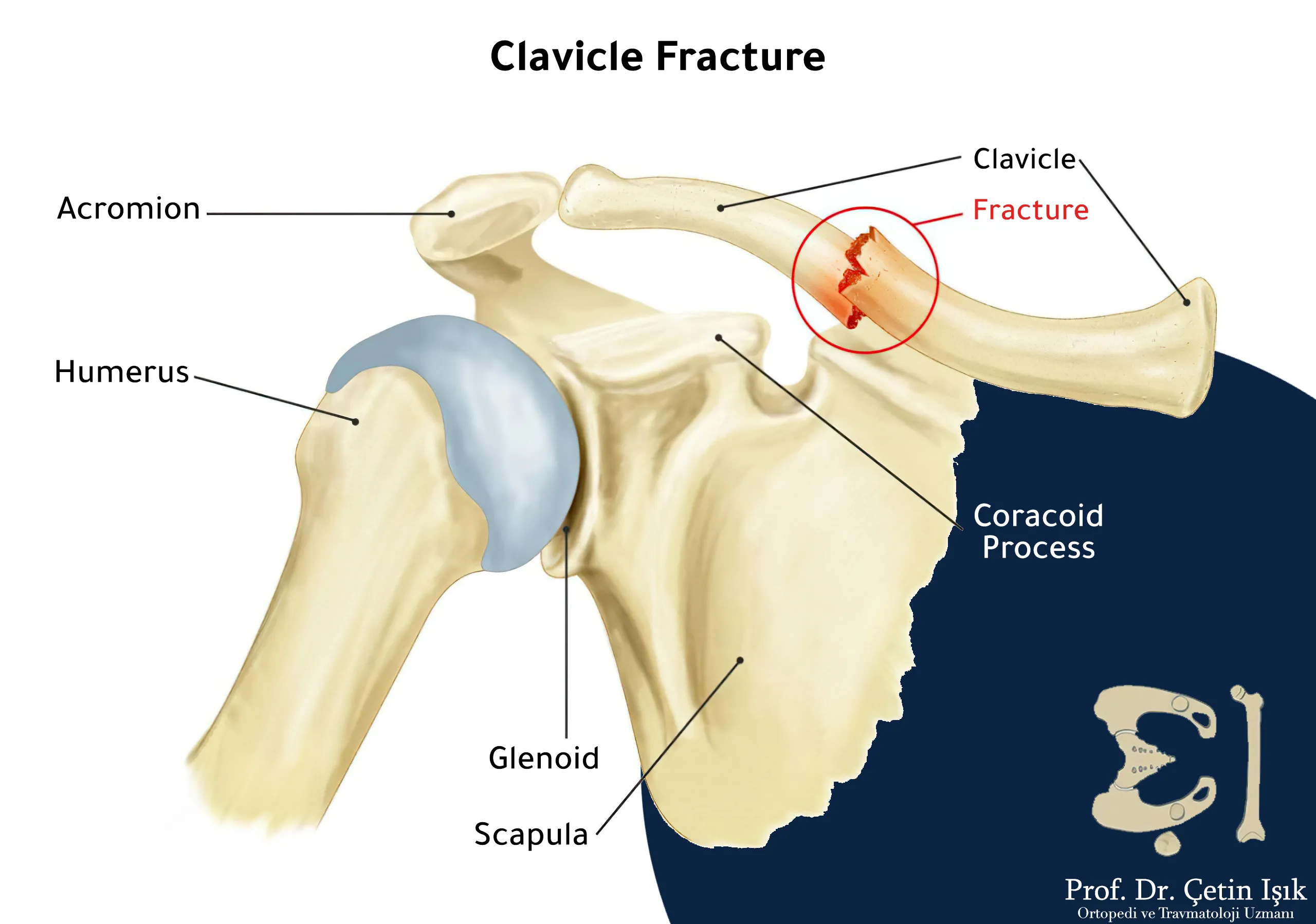
Clavicle fractures vary in severity and shape. The bone can crack slightly or break into several pieces (comminuted fracture), and the broken pieces of bone may line up straight or be displaced from their normal position (displaced fracture).
Causes of clavicle fracture
A clavicle fracture requires that sufficient force or pressure be applied to the bone to cause the fracture. This can be caused by:
- Falling onto the shoulder or outstretched arm
- Automotive accidents and direct collision of the collarbone
- Sports that require physical contacts, such as football and wrestling, or that increase the chances of a person falling, such as skiing or cycling
- During normal delivery by 2-3%, which is most common in the right clavicle
Symptoms of a clavicle fracture
Symptoms vary Clavicle fracture In many people, depending on the severity of the fracture and its location, the following symptoms can be observed:
- Sharp pain, which gets worse when moving the shoulder or arm
- Reduction of the natural movement of the shoulder
- Cracking sounds when the fracture occurs
- Bruising and swelling of the affected area
- Feeling of numbness or tingling in a few cases when the nerves in the arm are damaged
- The shoulder rolls forward due to loss of support from the collarbone
- A bony bump that can be seen through the skin
- Bleeding if nearby tissues are damaged, which is rare
Diagnosing a clavicle fracture
First, the doctor investigates the cause of the fracture, how the injury occurred, and the severity of the symptoms, and then begins to examine the shoulder carefully. Usually, there is a clear deformity or protrusion at the fracture site, where light pressure on it causes pain.
The doctor also runs tests to make sure nerves or blood vessels are not damaged when the fracture occurs.
To confirm the diagnosis of a collarbone fracture, the patient is required to take an X-ray of the collarbone to help locate the fracture accurately and determine its severity.
An X-ray of the entire shoulder may be ordered for the patient with the fracture to check for additional damage.
If other bones are broken, a CT scan can be done to see the bone fractures in better detail.
Clavicle fracture treatment
Most clavicle fractures heal with conservative measures and without the need for surgery except for specific injuries such as displacement of the broken ends of the bones.
Conservative management of clavicle fracture
- Wearing an arm brace or shoulder immobilizer: A No. 8 clavicle splint is usually used immediately after the fracture to keep the arm in place. It can be worn for about a month and removed while sleeping or showering.
- Take pain-relieving medications: such as acetaminophen, which helps relieve pain while the bone fracture is healing
- Using cold compresses: which are placed over the collarbone for 20-30 minutes every 2-3 hours to reduce pain and swelling.
- Physiotherapy: It is essential to maintain the movement of the arm to prevent shoulder and elbow stiffness and to strengthen the shoulder muscles under the supervision of a specialized physical therapist.
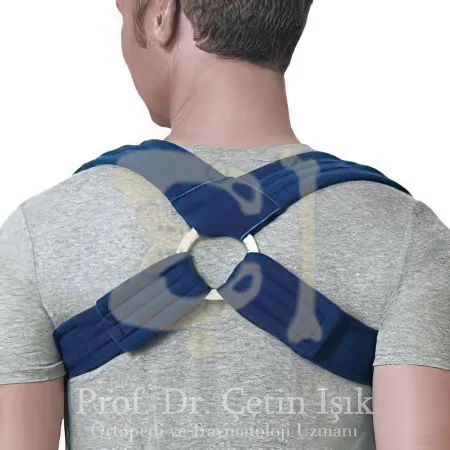
For more details on the best painkillers for bone and joint pain; The article can be read here.
Surgical treatment of a clavicle fracture
It usually involves surgery Broken collarbone an open incision to move the bone fragments into their normal position and then hold them in place with metal devices; There are two common surgical options for this:
Laminate fixation
Which entails attaching a plate to screws and fixing it outside the bone, usually not removed unless it causes discomfort or discomfort to the patient (this happens a year or more after surgery)
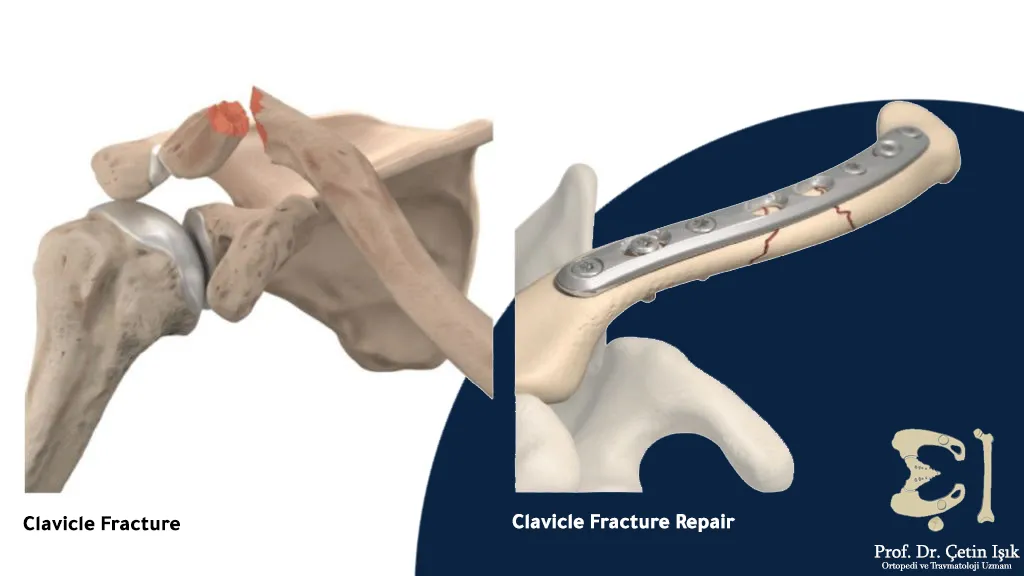
Internal fixation
In which the surgeon inserts a long nail into the center of the bone, one of the advantages of this procedure is that it requires a smaller surgical incision and causes less damage to the surrounding soft tissues, however it requires a second surgery to remove the fixator
The devices are removed as an outpatient surgical procedure. They are done under general anesthesia, resulting in small voids in the bone, but recovery is much faster than the original surgery, significantly since the fracture is already healed and the soft tissue is less damaged than it was.
Complications associated with clavicle fracture surgery
There are risks associated with any surgical procedure, including the following:
- Infection
- Hemorrhage
- Pain
- Nerve or blood vessel damage
- Anesthesia reaction
Patients who smoke, have diabetes, or are elderly are more likely to have complications during and after surgery.
Risks of clavicle fracture surgery include:
- Subclavian numbness
- Lung injury
- Irritation from metal hardware
- Difficulty healing the bone
Prevention of clavicle fractures
Most of the time, the collarbone fractures suddenly, and it is difficult to prevent this, but some guidelines can help keep the body's bones safe from exposure to fractures. Like:
- Maintain a balanced diet and eat calcium-containing foods to prevent Osteoporosis
- Doing sports while observing the rules and making sure of the correct posture for any activity such as riding a bicycle
- Wear protective clothing in contact sports
- Wear a seat belt when riding in a car and drive calmly to avoid accidents
Finally, a clavicle fracture is a common and painful fracture that can most of the time be managed without surgery using a shoulder brace and painkillers. It is also important to start physical therapy after recovery to restore mobility and strength in the shoulder and prevent stiffness.
Sources:
Common questions
How long it takes for a fracture to heal depends on many factors, such as the age of the injured person and the number of pieces broken.
Clavicle fractures may heal in children within four or five weeks, in adolescents around six to eight weeks, and in adults up to 12 weeks.
Most collarbone fractures heal with time with conservative treatment, such as placing cold masks in the area of fracture swelling, wearing a shoulder sling, and taking pain relievers. Sometimes surgery may be necessary for the fracture to stabilize it until healing using strips, screws, or metal rods.
Orthopedic immobilization is a common method of treating a broken clavicle, either with a sling or a figure-eight splint.
Usually, when the pain of a clavicle fracture begins to recede, you can start moving the shoulder gradually, according to the doctor's instructions, or under the supervision of a physical therapist.
The clavicle is the long bone at the top of the chest. The clavicle connects the upper part of the sternum to the shoulder blade. The clavicle is important because it allows the shoulder to move away from the human body and, in partnership with the rib cage, protects the heart from shock.


